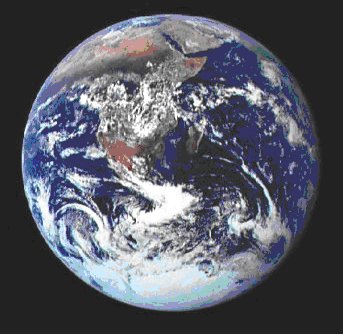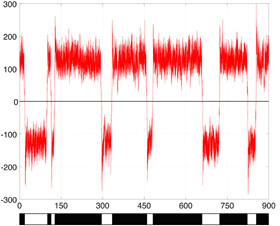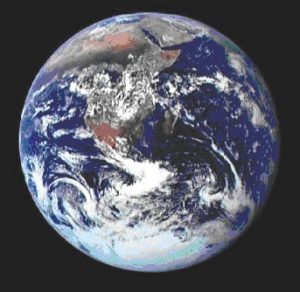VKS collaboration (CEA-CNRS-ENS Lyon and Paris), CEA contact: Francois Daviaud
Over the geological ages, the Earth has undergone several erratic reversals of its magnetic field. The sun’s magnetic field is reversed regularly every 22 years according to its cycle. These magnetic dynamics, which are still shrouded in mystery, play a role in our planet’s exposure to cosmic rays.
The joint VKS experiment1 (CEA2, CNRS3,4, the Ecole Normale Supérieure in Lyon3 and the Ecole Normale Supérieure in Paris4) has, for the very first time, been able to observe magnetic field reversals in laboratory conditions thanks to a highly turbulent flow of liquid sodium. The experiments should help scientists to understand more about cosmic magnetic field reversals. The results are published in Europhysics Letters, Volume 77, March 2007.
The Earth’s magnetic field is created by highly disordered movements that churn up the liquid iron core at the center of the Earth: this is known as the “dynamo” effect. One of its most astonishing characteristics, revealed thanks to paleomagnetic research, is that reversal of the magnetic poles is totally random. They remain close to the Earth’s geographic poles and flip between north and south about once every 100,000 years or so, although longer periods have been found between reversals. On average, these reversals last for a few thousand years.
The cause and timescale of such reversals, together with the geometry of the magnetic field during a reversal remain the subject of much debate. The consequences may be considerable: during a reversal, the magnetosphere that protects the Earth from solar and cosmic radiation is significantly weakened. Life on Earth, and human life in particular, has survived this kind of situation in the past (the last reversal occurred 700,000 years ago), but it would severely interfere with our modern communications systems (satellites and networks, etc.).

The researchers involved in the VKS experiment had shown that it was possible to reproduce the dynamo effect in a laboratory experiment, using a turbulent flow of liquid sodium produced by the counter-rotation of two impellers inside a cylinder5 : with the two impellers rotating at the same speed, a stationary magnetic field is spontaneously generated once a certain threshold is exceeded. They have now observed that when the impellers rotate at different speeds, thus adding global rotation similar to that of the planets and stars, the dynamo field may vary over the course of time. Certain regimes have uncannily similar characteristics to the behavior of the Earth’s magnetic field:
The field flips from one state of polarity to its opposite, for irregular time periods and with the transition from one polarity to the other lasting only for a very short period.
– The periods during which the field is stable vary in length but always last longer than the time needed for a reversal
– Field excursions, periods during which the field decays and then grows again without any change of polarity, can also be observed

At other rotation speeds, the magnetic field may periodically be reversed, rotating in the space without polarities canceling each other out, as is observed in the case of the sun.
These experiments imply that it will now be possible to conduct laboratory studies of phenomena that have intrigued geophysicists and astrophysicists for centuries.
1. Von Karman (physicien qui donna son nom à l’écoulement réalisé) Sodium (fluide utilisé dans ces expériences)
2. Service de physique de l’état condensé du CEA, équipe de François Daviaud
3. Laboratoire de physique de l’Ecole normale supérieure de Lyon, (CNRS, ENS Lyon), équipe de Jean-François Pinton
4. Laboratoire de physique statistique (ENS Paris, CNRS, Universités Paris VI, et Paris VII), équipe de Stephan Fauve
5. L’expérience VKS est réalisée au CEA/Cadarache, au Département de technologie nucléaire de la Direction de l’énergie nucléaire. Ce résultat fait l’objet d’un article dans Physical Review Letter 98, 044502 (2007).
1ère publication sur l’effet dynamo : R. Monchaux, et al., Phys. Rev. Lett. 98, (2007) 044502.
Voir l’article du journal “Le Monde du 17/04/2007 :
-
See also the highlight of the DRECAM “The VKS2 experiment: Generation of a magnetic field by dynamo action in a turbulent flow (On the origin of the earth magnetic field…)”.
-
See also results of the simulations :
Subcritical Dynamo Bifurcation in the Taylor-Green Flow
Y. Ponty, J.-P. Laval, B. Dubrulle, F. Daviaud, and J.-F. Pinton
Phys. Rev. Lett. 99, 224501 (2007)






